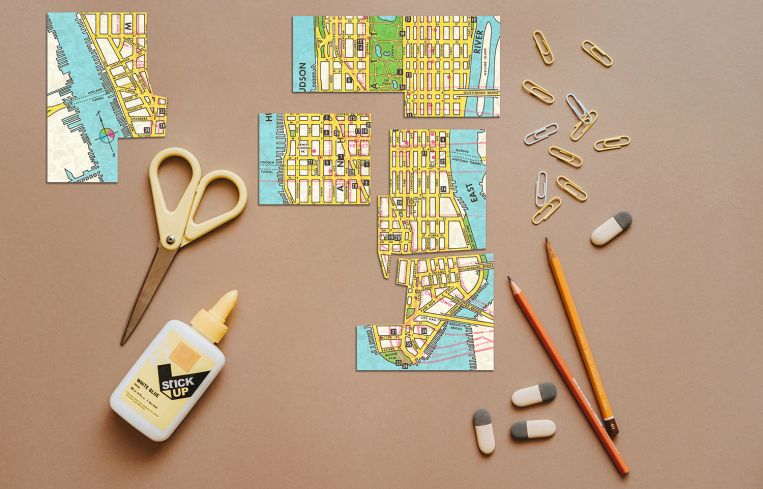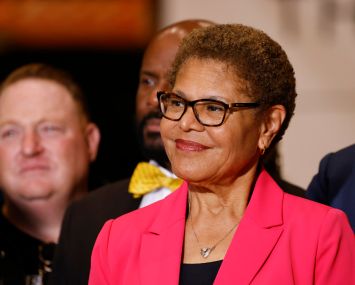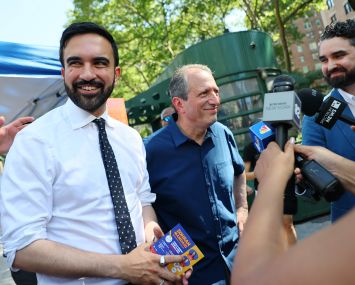Can NYC Revamp Its Archaic Commercial and Industrial Zoning?
By Rebecca Baird-Remba January 16, 2024 1:00 pm
reprints
New York City has barely touched its commercial and industrial zoning since it created its modern zoning code in 1961. That has opened a gap between the zoning text and reality, one that only seems to widen. For the first time in 60 years, the city is trying to narrow that gap.
A proposed update of the zoning for industrial, retail and commercial properties — in theory — would make it easier for businesses to grow or to locate in places they can’t now.
The cluster of 18 different zoning changes under consideration seeks to modernize a broad array of outdated mandates, including eliminating arbitrary rules about where different kinds of retail businesses can operate, allowing amusements in more parts of the city, making it easier for performance venues to operate legally, creating new types of denser manufacturing districts, allowing office and retail on upper floors and in residential areas, and enabling some light industrial uses to occupy retail and office space.
Along with these updates, there are also provisions for expanding where scientific research labs can locate, allowing what the update calls “micro-distribution hubs” in retail storefronts, and eliminating many restrictions on businesses based in homes and apartments. The City Planning Commission kicked off the nine-month public review for the slate of zoning changes — dubbed by the administration of Mayor Eric Adams “City of Yes for Economic Opportunity” — on Oct. 31. Community boards are still considering the proposal, which would go to borough presidents before the City Council votes on it this summer.
“The administration deserves a lot of credit for taking this on,” said Patrick Sullivan, a zoning attorney at Kramer Levin. “These are changes that have long been needed but they’re small — a large number of small things that people have been asking for for years. Each one of them taken alone is not a huge change, but overall it’s moving the zoning resolution in a much more helpful direction.”
The changes include measures as simple as allowing bike repair and bike rental shops to operate in the same commercial zone (technically they cannot now, even if they are across the street from each other) and as complex as creating a new Planning Commission authorization process for small retailers that want to locate in a residentially zoned area — as long as they are within 100 feet of a corner. New manufacturing districts — which would not be mapped but would be available to property owners that seek a rezoning — would allow taller industrial buildings with fewer required parking spots than the current industrial zoning.
As City Planning Director Dan Garodnick noted during a recent information session on City of Yes, the current zoning rules “no longer even reflect the realities of today’s economy. In many places they arbitrarily and needlessly restrain small business growth, entrepreneurship and innovation. In certain commercial corridors you can easily site a tennis court but not laser tag. In a home, you can be a music teacher but not a barber. You can have a rock band in a bar, but in many places you can’t dance to the same band. … Those sorts of barriers and so many others contribute to our city becoming less vibrant over time.”
However, changing industrial zoning, in particular, is often a source of drama. Back in 2018, the administration of Mayor Bill de Blasio released a rezoning plan for the North Brooklyn industrial zone, which covers a swath of land along Newtown Creek stretching from eastern Greenpoint to Bushwick. It ultimately died during negotiations between city officials, industrial jobs advocates, and the local City Council members.
Leah Archibald, head of North Brooklyn industrial advocacy group Evergreen Exchange, argues that the new manufacturing zone proposals sound a lot like the ones that she and other advocates panned in 2018.
“They really just kind of ripped the pages out of the North Brooklyn Industry and Innovation Study,” said Archibald, referring to the 2018 proposals. “We’re super-opinionated on this because we went through the whole thing with them.”
In 2018, advocates were concerned about new office development, hotels and retail in the area around the Morgan Avenue L train stop, which has over the past decade evolved from graffiti-covered warehouses to a haven for trendy bars and clubs. A weak office market and the city’s hotel special permit has eliminated many of these concerns, but not all of them.
“We just want to tighten it up so it doesn’t become a commercial development free-for-all,” Archibald explained. “We want to make sure there are limits on non-industrial commercial uses in the [industrial] core. In the growth area, we want some incentive to retain at least 1 [floor area ratio] of industrial. We want the benefit to accrue to manufacturers who are growing.”
Now, advocates are more concerned about the growth of large-scale amusements, namely outdoor concert venues like The Mirage, a troubled outdoor concert venue in Brooklyn’s East Williamsburg that can host 6,000 people and has become known for huge, drug-fueled parties.
“It’s a massive concert venue, it’s in the M3 [heavy industrial] area, and it’s adjacent to waste transfer stations and an active rail line,” said Archibald. “We’ve got no problem with nightclubs. But a 10,000-person, open-air club and in that particular area, ringed by waste transfer and active rail, it’s beyond the scale of what can be safe or manageable.”
Large indoor and outdoor amusements can now effectively operate only in industrial areas and in Coney Island. Under the new rules, they would open in more commercial zones, and be limited to 10,000 square feet in industrial areas. Archibald felt that was too little, too late for East Williamsburg and Bushwick, which already have large indoor amusement operations like paintball and laser tag facility Area 53, parkour gym Brooklyn Zoo, and a “rage room” where visitors can smash plates, phones and computer equipment while wearing protective gear.
“I don’t know if that’s going to be a meaningful impact on our industrial zone, because the horse has already left the barn,” she said.
However, she still feels that industrial businesses need to be able to build taller, and do so without the onerous parking requirements written into the current manufacturing zoning.
“We would like to see it allowing taller, loft-like buildings in the [new] M3A [zone] to allow bigger manufacturing buildings,” said Archibald. “Move offices off the ground floor, get more production on the ground floor. It’s a grossly unfair parking requirement, and it impacts business growth and our ability to grow jobs here. Loading continues to be important, especially for new construction, especially in our area where there are conflicts between pedestrians, motorists and trucks.”
Of course, the industrial zoning changes are not the only ones that have sparked controversy during the public review. In 2017, the city repealed the Cabaret Law, which prohibited dancing or live music in bars or restaurants unless those businesses obtained a cabaret license. Created in 1926 to regulate speakeasies, the law required businesses to get approvals from several different city agencies and the local community board to obtain a cabaret license. However, the law’s repeal did not change the “Footloose”-style restrictions on dancing in the commercial zoning code.
Restaurants and bars that host comedy shows, dancing, and live music will be treated equally under the new zoning, and venues that allow dancing would no longer violate the law. Larger venues would also be allowed in some commercial districts as-of-right. During recent public meetings, members of community boards and the public have argued that these changes would allow new strip clubs to open. However, the city has effectively banned the opening of new strip clubs since 2001, and the City of Yes rules do not address adult businesses.
Allowing laboratories in more commercial zones will be a welcome change for the real estate industry, which has long lamented how zoning hamstrings its ability to convert commercial buildings to life sciences labs. Current rules allow “medical or dental laboratories for research or testing, or the custom manufacture of artificial teeth, dentures or plates” in most commercial zones, creating confusion about where biotech-focused labs could operate. The new rules would allow all kinds of labs, as long as they don’t produce noxious or harmful chemicals that could affect their neighbors.
“They’re changing in the zoning what the Department of Buildings had been allowing through interpretation,” said Sullivan, the land use attorney at Kramer Levin. “Same with the micro-fulfilment. The city and the market had evolved in a way that zoning hadn’t contemplated. The Department of Buildings has recognized that a lot of laboratories are not different from offices.”
Letting retailers and offices occupy upper floors in residential buildings is another quietly revolutionary idea.
“Allowing commercial uses on separate parts of the same story or to locate above residences — this kind of flexibility is incredibly important,” said Mitch Korbey, a real estate attorney at Herrick Feinstein who once worked at the Department of City Planning. Allowing small commercial businesses near intersections on residentially zoned blocks also opens up more areas where bodegas, produce markets, and law and real estate offices can lease, he noted.
“The idea of allowing corner stores in residential neighborhoods, communities that are not served by grocery stores, pharmacies, banks,” said Korbey. “Instead of having to do a rezoning which can take a long time, the idea of creating a new CPC authorization — it’s a more limited application to allow up to 2,500 square feet [and] would allow office and retail. Recognizing that people may be working closer to home, maybe living in the same building they’re working in. This will help with that, and I think it’s an important recognition of where we are in the economic climate.”


